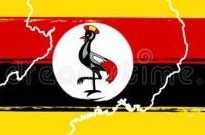List Of Irrigation Schemes In Uganda
Accordingly, an irrigation scheme can be defined as an agricultural project involving multiple holdings that depend on a shared distribution system for access to irrigation water and, in some cases, on a shared water storage or diversion facility.
Irrigation in Uganda
Small-scale informal irrigation has been practiced in Uganda since the 1940s. The majority of farms are located not too far from lakes, rivers and fringes of swamps which makes them suitable for irrigation. Formal irrigation development in the country commenced in the 1960s with the following schemes:
The Mubuku irrigation settlement scheme in the Kasese District was established in 1998 as a settlement scheme with gravity irrigation and water intakes from Sebwe and Mubuku rivers..
The Kiige scheme in the Kamuli District has Lake Nabigaga as a water source for sprinkler irrigation of citrus fruits was established in 1998
The Labori and Odina schemes were abstracting water from Lake Kyoga for sprinkler irrigation; the Labori scheme, in the Soroti District
The Ongom scheme in the Lira District is a sprinkler irrigation scheme for citrus fruits established in 1998
The Atera irrigation scheme in the Apac District was designed to abstract water from the Nile through pumping and subsequent gravitational flow through pipes and water hydrants to the fields.
The Agoro self-help irrigation project in the Kitgum District is a gravity-fed scheme with intake from the Agoro River established in 1998.
In the 1970s the Chinese initiated the development of rice schemes, with the Kibimba Rice Scheme in Iganga as a rice technology development scheme and the Doho rice scheme in Tororo district for seed multiplication and popularization of production.
The Government constructed and implemented another scheme, the Olweny swamp rice irrigation project in 2001
Regulatory Framework
The Department of Farm Development (DFD) within the Ministry of Agriculture, Animal Industry and Fisheries.
The DFD has the mandate to promote and spearhead sustainable agriculture through the provision of guidance and strategies in, among others, irrigation, drainage and water harvesting and also to promote, test, and popularize the utilization of appropriate machinery and equipment.
The DFD’s major responsibility is to modernize agriculture by transforming subsistence agriculture into an economically viable venture, through the promotion of appropriate technologies in the water sector. In this transformation process, irrigation, water harvesting, water conservation and wetland management are major activities. Within the DFD, the section directly involved with agricultural water utilization is the Irrigation and Drainage Section within the Division of Watershed Management of DFD
The functions of the Irrigation and Drainage Section are to:
Provide policy guidelines on irrigation and drainage and the utilization and management of wetlands
Participate in the planning, selection, design and construction of replicable and sustainable irrigation and drainage systems;
Provide technical guidance in popularizing farmer-managed smallholder irrigation systems;
Provide training for staff and other stakeholders in irrigation technology and the sustainable utilization and management of wetlands;
Coordinate the development of irrigation in the country;
Monitor and evaluate progress in irrigation activities in liaison with district subject matter specialists.
Irrigation Benefits to Agriculture in Uganda
Irrigation helps to increase agricultural production. The yields for irrigated crops are expected to be two to three times higher.
It helps to utilize land for agriculture.
Diversification of crops like corn, beans, peas and so on can be harvested.
High valued cash crops like tobacco or sugar cane are grown as annual crops with the help of ground water irrigation.
From the irrigated fields, the yields are stable and reliable. Assured production targets can be met.
Reduces fluctuations in the year-to-year yields and the risk of crop failure due to drought.
Allows for continuous cultivation.
As pumps and other ancillary equipment are required, there is an increased demand for irrigation equipment.
